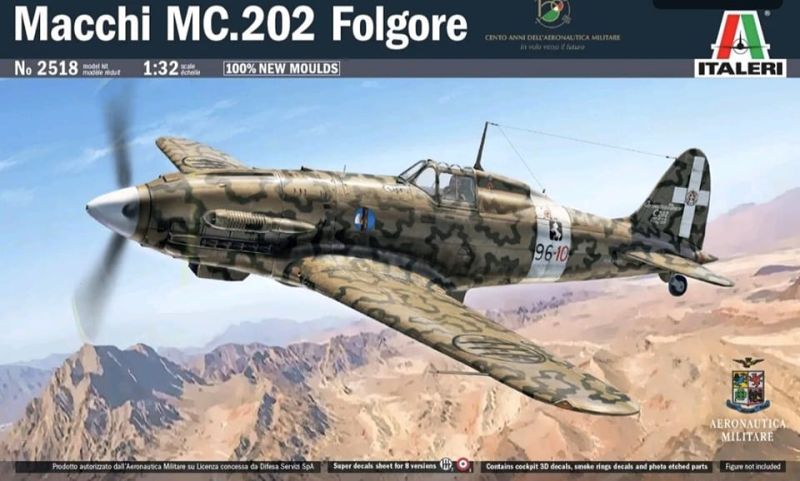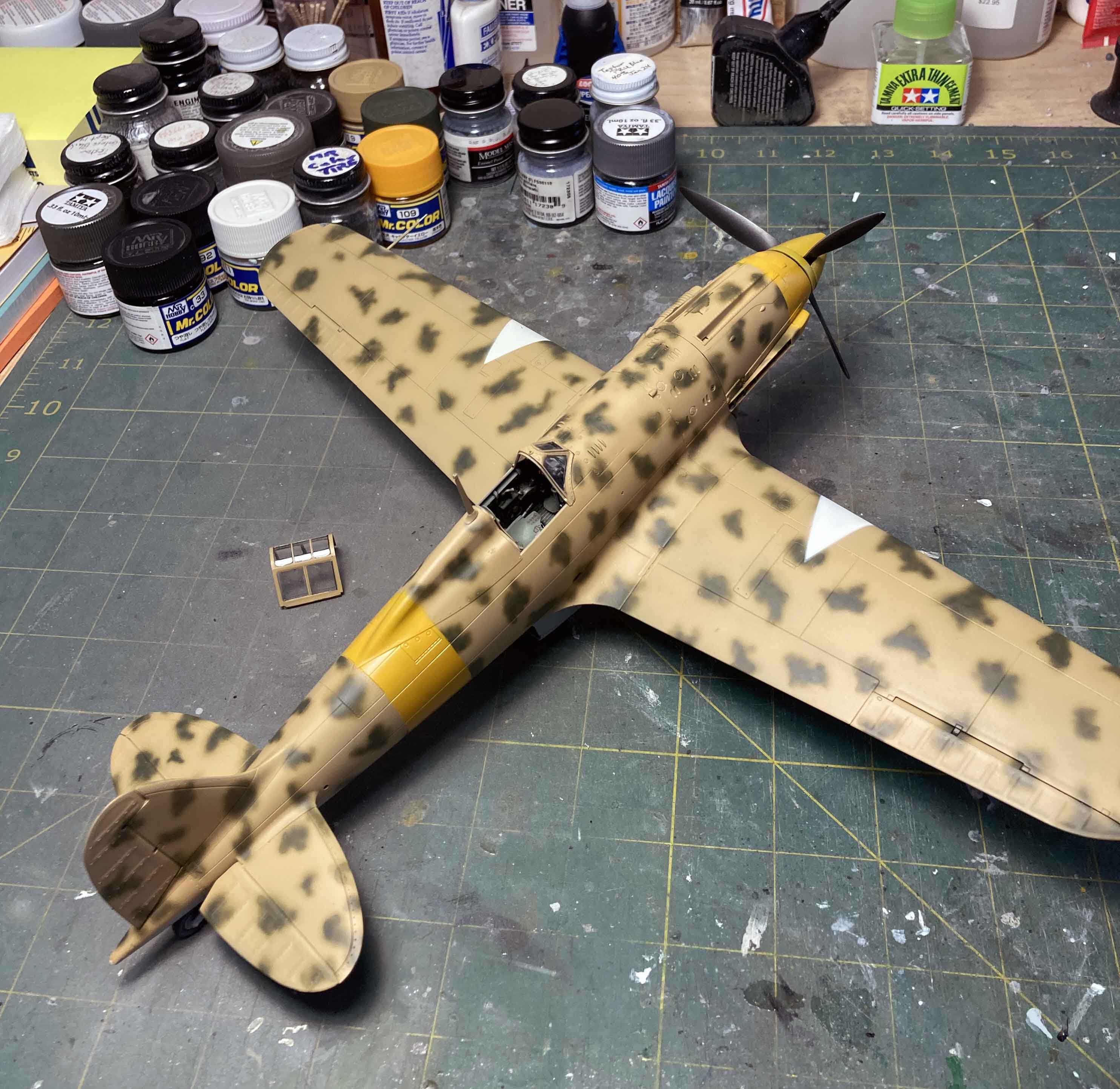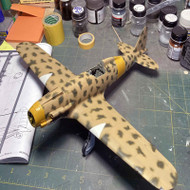Italeri Macchi MC.202, 1/32nd Scale, Kit No 2518, Part 3
Posted by Phillip Friddell on 17th Feb 2024

So here we are, folks, right in the midst of our final installment of what has truly become a never-ending story. This kit, which could and should have been able to produce the very epitome of MC.202 models, has been an ongoing disappointment in so many ways, providing an unfortunate degree of balance to what has been a series of mostly positive kit reviews here at LionHeart. Let’s do a quick summary of what’s what, then, and get this ongoing and seemingly endless bleeding over with!
First, and to be fair to Italeri, the kit is mostly well-designed and component fit is generally superb except, unfortunately, for the panels around the engine, which are a bit clunky and require some help when being fitted. To counter that, the fuselage halves, wing panels, landing gear, and most of the interior fit with each other like the proverbial glove. Detailing is a bit heavy-handed but is more than adequate once paint has been applied to the model. There’s a decent and perhaps surprisingly well-detailed engine included, along with a gun deck and guns for the fuselage, and they’re well done too. The completed model (or at least as far as we’ve completed it up to this point) has The Sit and looks pretty darned good. Even the inclusion of photoetch works well for the kit; it’s not too stiff, not too flimsy, and is easy to manipulate. The only downside to the photoetch is that it isn’t optional; every single bit of it is required in order to build an accurate model. There are no optional polystyrene replacement parts for any of those brass parts. None. Nada. Zip. Zero! (We wanted to draw a Three Bears comparison but decided that might be an analogy too far so we didn’t do that, but you get the idea, right?) And, before we forget, the kit decals are more than adequate should you choose to use them.
Anyway, that’s the good stuff. The bad stuff, and there has to be bad to balance good, is largely annoying rather than fundamental in nature but it’s there and you’ll have to deal with it one way or another, so let’s get going and see what’s what.
First and foremost, the instructions are entirely pictorial and they leave a bit to be desired when trying to determine how to model certain assemblies. We complained about that last time around so we won’t repeat it today, but be prepared to step outside the box and participate in the time-honored ritual of Figuring Stuff Out For Yourself with this kit because it’s something you’ll need to do in several seemingly minor yet ultimately important areas. Those instructions are also more than a bit vague as to which variant of the airplane the kit will actually let you build, should you care about such things. (As with all airplanes, the Accuracy Devil lies in the details of those variations and it would’ve been nice if Italeri had told us exactly which ones they had replicated.)

Once you get comfortable with the instructions you can begin filling in all the ejection pin marks that will be seen once the model is completed. There are, unfortunately, quite a few of them to be dealt with, so you’ll be busy for a while unless you make the decision to leave them alone. The exhaust stacks join the party at this time, with over half of those in our review sample having large dimples in their flat surfaces that require filling, and you probably ought to figure out how you’re going to deal with the transparencies as well since they’re too thick, somewhat distorted, and have prominent yet softly molded frames with no factory-provided masking devices to assist with their painting—you might expect that for a kit with this price point but they’re not there. The windscreen fit on our example is a bit wonky too, but we’ll allow that it could be due to our admittedly limited modeling skills rather than any kit anomaly. We don’t actually believe that, you understand, but it could be…
Then there’s the real elephant in the room, the panels that cover the engine and guns and make up something like 30% of the fuselage shape. They aren’t bad if you choose to build everything opened up except that the pieces are too thick to successfully simulate scale sheet metal, but they don’t fit all that well either and you’ll be spending a bit of time around the nose of this airplane if you want to model it buttoned up. Add to that the necessity for adding a great many small photo-etched components, all properly trimmed and precisely aligned with one another, in order to recreate the largish number of inspection panels found on the real airplane (a growth opportunity for one’s modeling skills, perhaps?) and you can begin to understand the frustration level lurking within the largish box this model arrives in.
Anyway, how should we summarize this model? Well, for starters, it would have been kit of the year in 2002, but this isn’t then. It’s an annoying kit in many respects, but that’s because Italeri came so close to getting it right and for whatever reason managed to miss the mark; we suspect kit design and tooling budget were the culprits here, but we have no way of knowing that with any certainty. We DO, however, know the model is flawed in areas that should have been a slam-dunk for a manufacturer of Italeri’s stature in the year 2024. Maybe it was designed and tooled several years ago and not released until now? That could provide an explanation for some of the issues we encountered during construction, but it doesn’t get Italeri off the hook.

The model you see before you is obviously not completed, mostly because we’re still waiting for a set of aftermarket decals that should have been here a month or so ago that would allow us to complete the model as a representative of those used by the 356th Squadriglia/21st Gruppo Autonomo as used during Italy’s ill-fated attempt to assist the Luftwaffe on the Ost Front, but we’re far enough along to give you the gist of things as we see them.
Would we build another one of these kits? Yes, now that we have a better idea of what’s required, we most assuredly would. It’s not a tough kit to build, it’s just frustrating in many ways. If you’ve got the modeling chops you’ll end up with an excellent model at the end of it all, but there’s frustration living in that kit box as well. Italeri have been at this stuff for a very long time and they know how the game is played—several of their early kits were pacesetters back in the 1970s for those of you old enough to remember those days. The problem is a simple one: Time and technology have progressed far beyond those simpler times yet this manufacturer is pretty much the king of the hill as far as Italian polystyrene models are concerned. A minute or two ago we said we’d have no issue with building another one of these kits, and that’s true. It’s also true, however, that we’d have no problem using certain of the model’s components to properly detail the long out of production and far more difficult to construct Pacific Coast Models offering in the same scale. In our world it’s one of those six of one/half a dozen of the other kind of deals. The manufacturer has done a superb job of creating a legacy kit that showcases their capabilities as they existed twenty years ago, but that was then, and we expect better things from our high-dollar kits nowadays.
Doggone it all, Italeri; you came so close! You almost nailed it. Almost…

